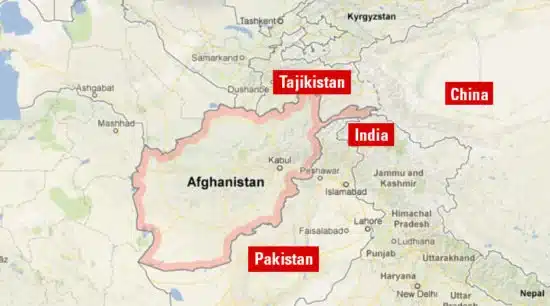Access to quality healthcare remains a challenge for war-ravaged Afghanistan. In the 10 years since U.S. troops went into Afghanistan to fight the Taliban, the war has cost thousands of lives. Many more have died indirectly, from the loss of healthcare.
Today, the country has one of the worst healthcare systems in the world. Many Afghans are left with no choice but to go abroad for medical treatment. According to official data, Afghans spend an estimated $285 million every year on medical treatment abroad.
Over the years, India has become a favoured destination for medical treatment due to the cost-effective facilities, availability of specialist doctors and easy connectivity. The number of patients from Afghanistan to India grew remarkably – from 27,505 in 2015 to 61,231 in 2016. However, in 2017, the footfalls dropped to 55,681. While the official record for 2018 is yet to be released, experts concur that an increasing number of Afghans today are looking at more affordable and sustainable healthcare solutions. Preferably, closer to home.
Changing realities
Afghanistan was ranked 173 of 178 nations on United Nations Development Programme’s (UNDP) 2004 Human Development Index. However, thanks to foreign aid and support, healthcare is improving with in the country. According to official data, there are 31 specialised hospitals, 34 provincial hospitals, six regional hospitals, 82 districts hospitals, 423 Comprehensive Health Center, 881 Basic Health Center, 786 Health Sub Center (HSC), 195 Mobile Health Team (MHT) and 428 others healthcare government facilities across the country. Almost all of them are supported by foreign aid and support.
India is one of the major donors to Afghanistan. It is the fifth largest development assistance provider to the country and by far the largest regional donor. India is supporting a number of initiatives in healthcare too. Recently three Indian health organisations have signed contracts – to the tune of $6.5 million – with an Afghan health company at the Ministry of Public Health (MoPH) to expand the provision of quality healthcare in Afghanistan. The plan is to establish a fully-equipped diagnostic centre, an advanced dialysis centre, and a manufacturing plant for the production of pharmaceuticals in Kabul.
“The private health sector is an integral part of Afghanistan’s health system and plays a crucial role in meeting the demands of Afghans for healthcare,” Afghanistan Health Minister Dr Ferozuddin Feroz told reporters at the function in Kabul on 17 March 2019. “The partnerships between the Afghan health businesses and Indian organisations that we witness today will help fill the gap in service delivery in the country.”
Strong foundation
The India-Afghanistan collaboration in healthcare dates back to 1966 when King Zahir Shah and Vice President of India Dr Zakir Hussain laid the foundation stone for a 400-bed children’s hospital in Kabul. The hospital – Indira Gandhi Institute of Child Health (IGICH) – represents the continuing friendship between the two countries and is the only hospital for children in Afghanistan. After the war, India renovated the hospital and added a new surgical block. Annually, about three lakh children (2.5 lakh OPD and 50,000 IPD) get treated at IGICH.
At the height of the Taliban insurgency in 2008, teams of Indian doctors and paramedics worked in Herat, Mazare-Sharif, Shibergan and Kandahar under tough security conditions. Many Afghan doctors were also given fellowships at Sir Ganga Ram Institute of Post Graduate Medical Education and Research in Delhi in different specialties like cardiac, cosmetic and reconstruction surgery, chest medicine and liver transplant.
India has made investments worth more than $3 billion in the economic reconstruction of Afghanistan as well as several smaller development projects that have bolstered India’s popularity among the Afghans. India has supported the Afghan Red Society Programme to treat congenital heart disease in children. India has also adopted a more liberal visa policy since 2014 for Afghan nationals, making it easier for Afghan patients to travel to India for medical treatment.
Chinese connect
India’s regional rival China is also bidding to help Afghanistan with healthcare manpower and hospitals. Afghanistan’s largest business investor, China has pledged increasing amounts of aid to the country. China recently opened the first Department of Traditional Chinese Medicine in Afghanistan, receiving over 20 outpatients every day.
Beijing is aware that in a bid to strengthen the country’s healthcare facilities, Afghanistan is keen to seek investments – from regional and international players. In Kabul, China has been instrumental in rebuilding the state-owned Jamhuriat Hospital, also known as Republic Hospital, which treats thousands of Afghans every year. China also provides training opportunities for Afghan health workers and doctors, including admission for MBBS courses. Several Afghan doctors, including Javid Safi, the CEO of Afghanistan Cancer Foundation, are educated in China.
China’s ties in healthcare with Afghanistan date back to 1974 when China “gifted” a hospital to the Afghan people. The Mirwais Regional Hospital, better known as the “Chinese Hospital”, in Kandahar has been in operation since 1979, providing healthcare services free of charge, primarily to the populace in Afghanistan’s Taliban-dominated southern region. While China built the hospital, many Indian doctors worked at the Mirwais hospital after the fall of Kabul in 2001.
What China calls the ‘Silk Road of Health’ and medical and health cooperation constitute an important part of the China-Afghanistan Belt and Road Initiative (BRI). The path to healthcare diplomacy in Afghanistan is a long and winding one.


















Add Comment